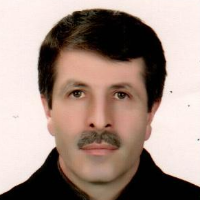Function of language and dialogue in Attar's Asrarnameh stories
In educational literature, dialogue is simple, explicit, short, direct, borderless, and merely in the service of propagating the message. Because the story begins without the premise that is common in today's short stories, the dialogue begins without the premise and progresses rapidly. In such stories, instead of the type of dialogue and speech being a function of the characters' narrative character and the characters speaking according to their character and social status and thus the type of dialogue is chosen, the characters are subject to the type of dialogue and the type of dialogue is subject to the message of the story. The character enters the story simply because it is presented as a statue of the poet's thought and imagination, so that the audience uses the power of self-visualization and cognition of the social base of narrative patterns to achieve the poet's intent that most mystical misunderstandings and experiences are out of reach. He is a clergyman, easier to understand. According to the necessity of this method of expression in educational dialogues, most of the speech and the turn of the dialogue is from the character from whom the message of the story is quoted. The tool of dialogue is language. The author approaches his artistic goal through the indirect language of dialogue (v. Najafi, 1380: 35-38). Therefore, the role and function of language in conversation and their connection is very important.
background and purpose The research method in this research is descriptive-analytical using library sources. Books and researches about Attar's thoughts and works such as: The Voice of Simorgh Wing (Seday-e Ball-e Simorgh), the sources of stories and allegories of Attar's Masnavi, the meeting with Simorgh and the fictional elements of the story of the pious woman have been written in Attar's Elahinameh; However, in none of the mentioned works and similar ones, there has been any discussion about the element of dialogue, especially the type of dialogues from the perspective of the multiplicity and variety of characters and the type of language function in anecdotes. For Attar, the story is a means, not an end. Therefore, in most anecdotes, the story ends in the shortest possible time, and most of the anecdote is devoted to the often mystical and moral conclusion. According to this introduction, the main questions of this research are what language skills Attar has used as a storytelling artist; What are the different forms of dialogue in terms of the multiplicity and variety of characters? How he left a message in the shortest possible time; To which strata did he pay attention and how did he harmonize the character of the characters with their speech? The authors therefore intend to examine the quality and quantity of the suggested issues.
The themes of Attar's anecdotes can be summarized as follows: the words of mystics and elders that are mentioned in a story and are drawn from it; Mystical description of historical figures such as Sultan Mahmud of Ghaznavi; Deciphering the romantic situation of lovers such as Lily and Majnoon, Sheikh Sanaan, etc .; Mystical thematization about objects and animals and mystical explanation of famous myths (cf. Ashrafzadeh, 1373: 34-39). Such themes have been Attar's pendants for expressing mystical purposes and miracles and psychological experiences. Attar has been familiar with the situation and thoughts of various sections of society. The characters of his stories have been selected from various strata of society, including prophets, kings, ministers, caliphs, mystics, lunatics, Zahedan, preachers, beggars, nobles and craftsmen (cf. Zarrinkoob, 1380: 105 and Sanatinia, 1369: 15 And 16). One of the most important parts of the story is expressing the characteristics of the characters, and this is achieved through dialogue. Attar has used the capacity of identifying and informing the dialogue to recognize the characters of the story in a desirable way. The dialogue in Asrarnameh takes place in four ways: direct, indirect, internal and theatrical. In Asrarnameh anecdotes, the three functions of referral, emotion and encouraging have the largest share of all types of language maps. In fact, anecdotes consist of two main parts and the result. In the main part of the story, the characters of the story play a role, and most of the sentences of the story are news and are likely to be true and false, and indicate external meanings; Thus language finds referral function; But in the second part, after the end of the anecdote, in which the narrator expresses mystical and moral meanings as the result of the story and invites the audience to understand the concepts and persuade them to act on them, the persuasive function has the greatest share. The change in the function of language in the conclusion of the story is very limited, and the motivational function is generally very pronounced. Bilateral dialogues account for the largest share of all types of conversations in the Secretariat. Of the one hundred anecdotes of the Asrarnameh, in the fortieth anecdote there is two sided dialogue. The conversations of these anecdotes are varied from the point of view of the parties to the conversation. The characters of the dialogue are in the thirty stories of two human beings, in one story two animals, in three stories one man and one animal, in two stories man and God and in one story man and angel. The language of the stories is simple and fluent. In educational anecdotes, the poet intends to teach mystical concepts and encourage the audience to learn it; Therefore, simple language is an important tool for the poet to achieve his goal.
The characters in Attar's Asrarnameh anecdotes have considerable variety. This diversity includes the Creator of the universe, angels, humans (of different classes), and animals. This colorfulness of the characters removes the dust of boredom from the reader. Character dialogues are the essence of anecdotes. In two sided dialogues, the characters are two human beings, two animals, a human being with an animal, a human being with God, and a human being with an angel. Among them, the two-way dialogue between two human beings plays a role more than other characters in anecdotes. One of the important points in all conversations is that one of the characters in the story represents the poet's thoughts, and ultimately the victory is from that character; thus, in educational anecdotes, the monograph secret dominates. Attar uses anecdote as a tool to achieve his goal, which is the expression of educational and mystical content and concepts, and conveys his message to the reader and explains this content and encourages him to do it for him; thus, in most dialogues of anecdotes, the message is about the context and the language has a referential role. After the referential function, the emotional and persuasive role is in the next stage and to advance its educational goals, it has used the methods of direct, indirect, internal and theatrical conversations and to benefit from these, it has used the form of anecdote.
Asrarnameh , Dialogue , Referral , Encouraging , emotional
-
Investigation and Analysis of the Intellectual Foundations of the Yasavi Order and Its Influence on Sufism in Asia Minor
A. Vahed *, Hadi Sadeghi, Mohammad Mahdipour,
Persian Language and Literature, -
An Analysis of the Novel “Cold Coffee of Mr. Writer” Accentuating the Function of Transposition in Guessing the Audience
*
Journal of Literary Criticism and Rhetoric, -
The importance of scientific Texts in editing and commentary on some lines of Hafez
Meisam Jafarian Heris *, Asadollah Vahed
Boostan Adab,




